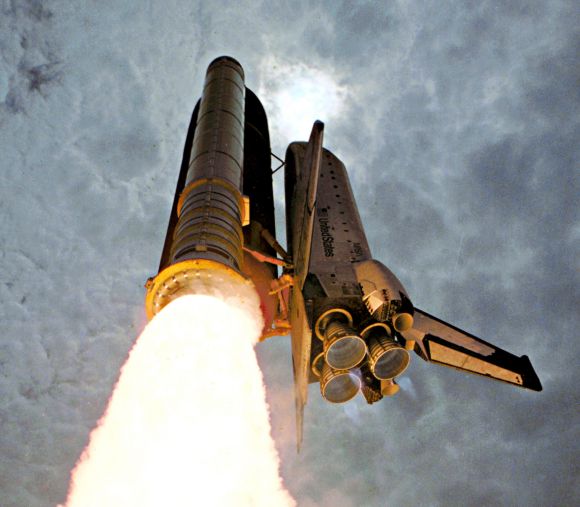
|
Credit & Copyright: STS-50,
NASA
Explanation:
Twenty years ago this week, the
Space Shuttle Columbia became
the first reusable spaceship.
Its second trip to low Earth orbit and back again began
on November 12, 1981, following its
maiden voyage by only seven months.
Seen above Columbia, 56 meters (184 feet) long with a
24 meter (78 foot) wingspan, is launched mated to an
external fuel tank and two solid rocket boosters producing
dramatic exhaust plumes.
The solid rocket boosters,
one on each side of the external tank, provide most of the thrust in
the first 2 minutes after launch and are then jettisoned for
later recovery.
Supplying the main shuttle engines during liftoff, the
external fuel tank separates after about 8 minutes.
The largest shuttle element not recycled for a future
flight, the external tank falls back
toward Earth breaking up and descending into a remote ocean area.
Still the oldest operating shuttle, Columbia is pictured here
in June of 1992 rocketing toward a cloud bank on
its twelfth flight.
Officially designated OV-102, Columbia is
fittingly named after the 18th
century sailing vessel which became the first
American
ship to circumnavigate planet Earth.
|
January February March April May June July August September October November December |
| ||||||||||||||||||||||||||||||||||||||||||||||||
NASA Web Site Statements, Warnings, and Disclaimers
NASA Official: Jay Norris. Specific rights apply.
A service of: LHEA at NASA / GSFC
& Michigan Tech. U.
Based on Astronomy Picture
Of the Day
Publications with keywords: ov-102 - space shuttle Columbia - space shuttle
Publications with words: ov-102 - space shuttle Columbia - space shuttle
See also:
